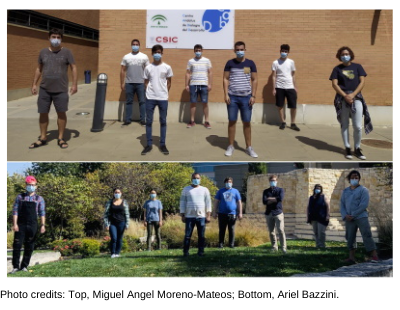Technical Report: CRISPR/Cas13-Mediated RNA Knockdown: A Cutting-Edge Addition to the Zebrafish Toolkit
 Ever since the discovery of gene silencing by double-stranded RNA (dsRNA)-induced RNA interference (RNAi) in worms and plants, a number of methods have been used to interfere with functions of gene products (without genetic manipulation) across organisms including Zebrafish. Owing to early reports of widespread off-target effects, RNAi by dsRNA did not gain much traction in Zebrafish research. By contrast, antisense knockdown mediated by morpholino oligonucleotides has been used widely to block splicing and translation of many target mRNAs. Despite differences in phenotypes of morphants and mutants in some zebrafish loci, many insights into gene functions have emerged and new genetic compensatory pathways revealed through the use of morpholinos. However, off-target effects have also been reported, and limitations in delivery methods have restricted the use of morpholinos mainly to studies of early development. Therefore, an effective RNA knock-down method with the potential for cell-type or tissue-specific manipulation of gene expression across the life-course has been long awaited by Zebrafish researchers. A recent CRISPR-Cas13 based knockdown method from the groups of Miguel Angel Moreno-Mateos and Ariel Bazzini (see photos) now shows immense promise (Kushawah et al., 2020).
Ever since the discovery of gene silencing by double-stranded RNA (dsRNA)-induced RNA interference (RNAi) in worms and plants, a number of methods have been used to interfere with functions of gene products (without genetic manipulation) across organisms including Zebrafish. Owing to early reports of widespread off-target effects, RNAi by dsRNA did not gain much traction in Zebrafish research. By contrast, antisense knockdown mediated by morpholino oligonucleotides has been used widely to block splicing and translation of many target mRNAs. Despite differences in phenotypes of morphants and mutants in some zebrafish loci, many insights into gene functions have emerged and new genetic compensatory pathways revealed through the use of morpholinos. However, off-target effects have also been reported, and limitations in delivery methods have restricted the use of morpholinos mainly to studies of early development. Therefore, an effective RNA knock-down method with the potential for cell-type or tissue-specific manipulation of gene expression across the life-course has been long awaited by Zebrafish researchers. A recent CRISPR-Cas13 based knockdown method from the groups of Miguel Angel Moreno-Mateos and Ariel Bazzini (see photos) now shows immense promise (Kushawah et al., 2020).
The authors tested Cas13 related proteins from various thermophilic bacteria, and found that Rfx Cas13d worked efficiently and with little toxicity in zebrafish embryos. By contrast, the Psp Cas13b and Pgu Cas13b proteins showed toxicity in embryos. Upon targeting the tbxta locus with guide RNAs and RfxCas13d, Kushawah and co-workers demonstrated the classical no-tail mutant phenotype in injected embryos. To demonstrate the ability of the system to impair mRNA activity, red fluorescent protein (RFP) or nano-luciferase reporters were targeted. The authors found knock-down of the reporter proteins and mRNA depletion in embryos. Importantly, the RfxCas13d system does not induce activation of an immune response or off-target effects, as reported for some morpholinos.
Recombinant RfxCas13d protein can efficiently deplete maternal mRNAs such as dead end 1 (dnd1) in early embryos, and with higher efficacy than Cas13d mRNA injections. This is a significant technical advance and one that is likely to facilitate rapid investigation of maternally provided RNAs, as the generation of conventional maternal effect mutants takes a significant amount of time and effort. The authors showed that their system is also effective for knock-down of a number of zygotic gene products (e.g. one-eyed pinhead, smad2, tyrosinase). The system can uncover genetic compensation which is triggered by degradation of some RNAs, as demonstrated by increased expression of vclb upon Cas13d knock-down of the paralog vcla. In addition to zebrafish, the authors reported efficient knock-down with RfxCas13d in other teleosts (medaka and killifish), and in mouse embryos, demonstrating the value of the Cas13d system as a targeting tool across vertebrates.
Whilst effective mRNA knockdown has been demonstrated with the RfxCas13d system, there is potential to develop this tool further for a variety of applications. The authors designed guide RNAs based on base-pairing probability and accessibility using the generic RNAfold software. It is hoped that widespread use of the Cas13d system will generate new data for training algorithms and lead to the development of new, improved tools for efficient Cas13 gRNA design, as has been done for Cas9-based genome targeting. Tissue-specific and inducible Cas13d and gRNA expression can allow knockdown in a directed manner at later stages and in particular cell types. Such an improvement would be especially useful for interrogating processes at post-embryonic stages and throughout the life-course. The Cas13d system can potentially also be adapted for RNA tagging and for interrogating RNA-protein interactions in a wide range of contexts. Such developments would fully realise the potential of the system for in vivo analysis of a range of processes and mechanisms using zebrafish.
Karuna Sampath
Warwick Medical School
Coventry CV4 7AL
United Kingdom
email: k.sampath@warwick.ac.uk
References
1. Oates AC, Bruce AE, Ho RK. Too much interference: injection of double-stranded RNA has nonspecific effects in the zebrafish embryo. Dev Biol. 2000; doi:10.1006/dbio.2000.9761. PMID: 10898958
2. Kushawah G, Hernandez-Huertas L, Abugattas-Nuñez Del Prado J, Martinez-Morales JR, DeVore ML, Hassan H, Moreno-Sanchez I, Tomas-Gallardo L, Diaz-Moscoso A, Monges DE, Guelfo JR, Theune WC, Brannan EO, Wang W, Corbin TJ, Moran AM, Sánchez Alvarado A, Málaga-Trillo E, Takacs CM, Bazzini AA, Moreno-Mateos MA. CRISPR-Cas13d Induces Efficient mRNA Knockdown in Animal Embryos. Dev Cell. 2020. doi: 10.1016/j.devcel.2020.07.013. PMID: 32768421.
3. Stainier DYR, Raz E, Lawson ND, Ekker SC, Burdine RD, et al. (2017) Guidelines for morpholino use in zebrafish. PLOS Genetics 13(10): e1007000.https://doi.org/10.1371/journal.pgen.1007000
4. El-Brolosy, M.A., Kontarakis, Z., Rossi, A. et al. Genetic compensation triggered by mutant mRNA degradation. Nature 568, 193–197 (2019). https://doi.org/10.1038/s41586-019-1064-z
5. Varshney, G., Carrington, B., Pei, W. et al. A high-throughput functional genomics workflow based on CRISPR/Cas9-mediated targeted mutagenesis in zebrafish. Nat Protoc 11, 2357–2375 (2016). https://doi.org/10.1038/nprot.2016.141




